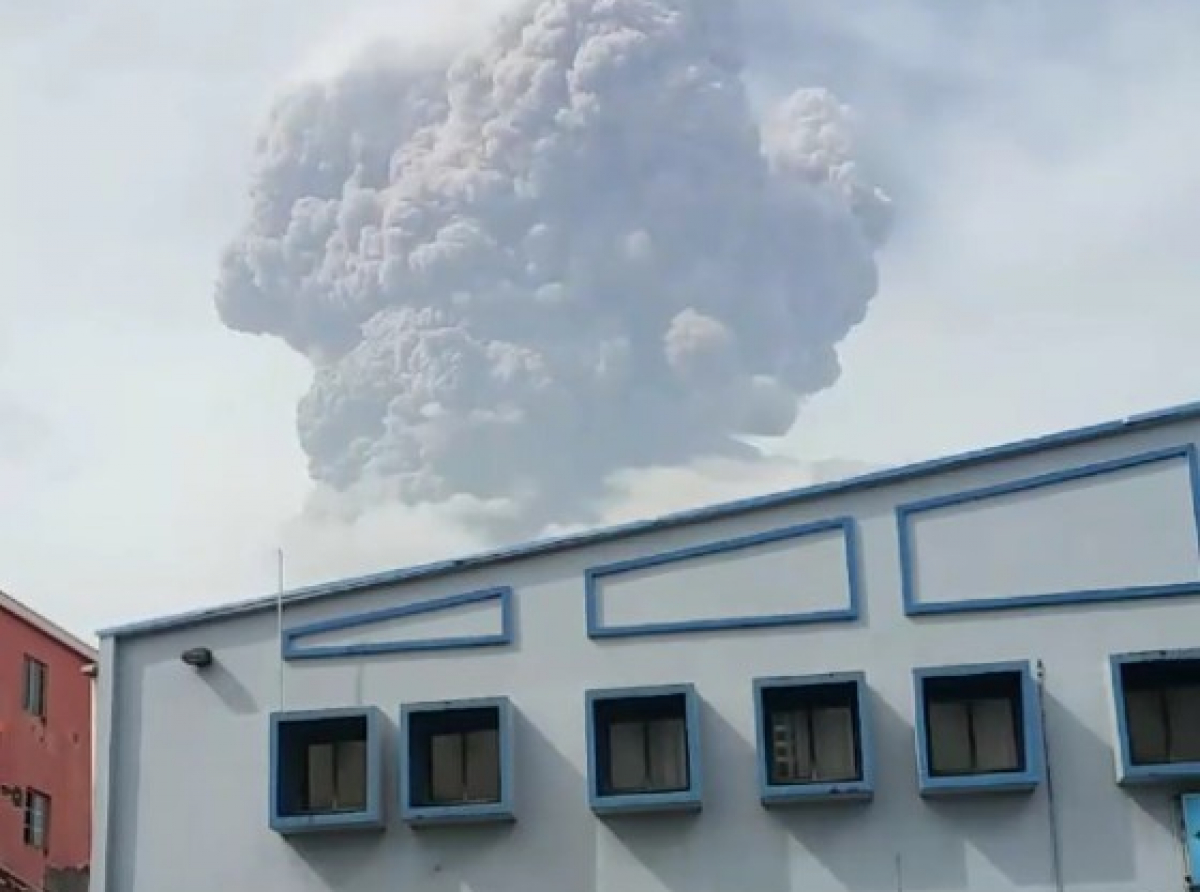Volcano Erupts in the Caribbean After Decades Being Dormant

Kingstown, St. Vincent, - After months of effusive eruptions and volcanic tremors, the La Soufriere volcano entered a new and explosive phase on Friday morning. Lying dormant since its last eruption in 1979, it is now sending columns of ash as high as 29,000 feet into the atmosphere. The volcano has caused more than 20,000 residents in the surrounding areas to be evacuated.
 The lead scientist monitoring the volcano, Dr. Richard Robertson of the University of West Indies Seismic Research Center, says that Vincentians should expect fallout from the ash fall to last for weeks.
The lead scientist monitoring the volcano, Dr. Richard Robertson of the University of West Indies Seismic Research Center, says that Vincentians should expect fallout from the ash fall to last for weeks.
“We won’t be surprised if this continues for the next few days, the next few weeks,” he said at a press conference on Friday. “It’s necessary for us to watch, monitor it, see whether it’s indicating that in this phase it’s going to get bigger, smaller, whether it’s heading to an end or not, that’s what the monitoring will be doing – collecting more data, trying to analyze them and try to find how to track this explosive eruption.”
Vincentian Prime Minister Dr. Ralph Gonsalves has worked extensively to get Vincentians living in close proximity to the volcano to safety. Thursday, he issued an evacuation order for those living on the north east and north west of the island. By the Friday morning eruption, more than 6,500 people had been transported to safe zones or emergency shelters.
Urging Vincentians to remain patient and calm, the Prime Minister made it clear that the country will be dealing with the effects of the eruption long term.
“...this not going to be simply like a hurricane where it might be a seven-day business, in some cases a two-day business. Professor Robertson has indicated that depending on the extent of the explosion and the damage done, it could be four months.”
Gonsalves has enlisted the help of the governments of Dominica, Grenada and Antigua in accepting Vincentian evacuees. Both Royal Caribbean and Carnival cruise lines have pledged five vessels to assist in transporting Vincentians to those islands.
The volcano has been observed erupting into the weekend, with two additional explosive eruptions recorded. The US Embassy in Barbados, which serves the Eastern Caribbean, issued a Natural Disaster Alert.
“Heavy ashfall with poor visibility is reported in the evacuation zone, and the Seismic Research Center (SRC) at the University of the West Indies (UWI) reports the ash column is falling back down around the volcano and surrounding area.”
As Caribbean governments scramble to assess the human and environmental implications of the volcano’s current period of activity, Dr. Robertson says he expects a bigger eruption than the one that occurred in 1979.
“...we don’t know how long and how much material still can come up to the top. I think the next couple of days, the data we collect from collecting the ash and analyzing it and also the gas would help us to determine that,” he added “...I would be surprised if the activity and the amount of activity we have is smaller, is less than ‘79 kind of scale.”
As of Sunday night, the volcano continues to erupt explosively and spew large amounts of ash and debris.
More than 8,000 people remain in emergency shelters, and thousands more have fled their homes.


